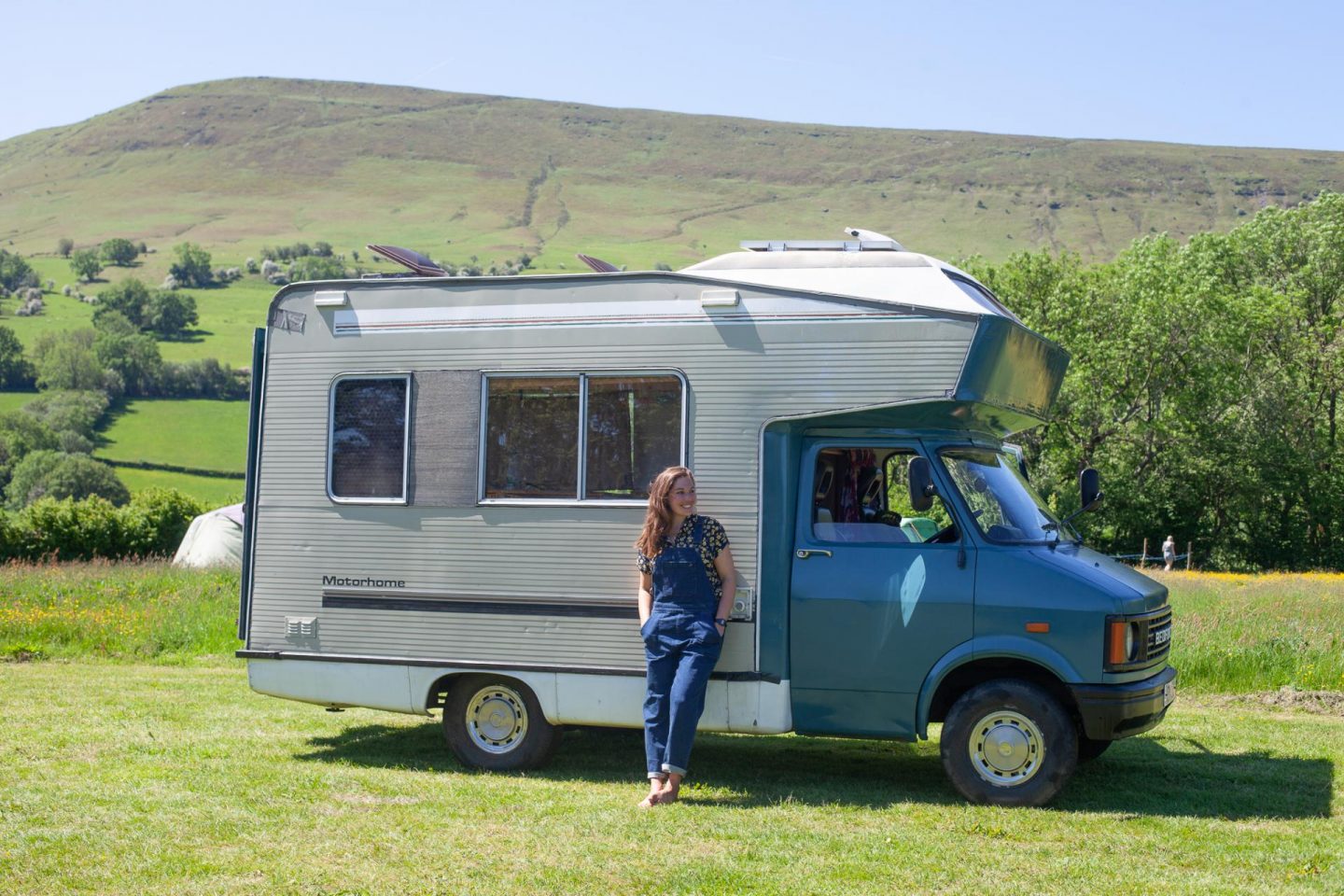
Meet Evie the Bedford campervan
Evie is a 1982 Bedford CF Mk 1 facelift van. We bought her in the summer of 2020 in the midst of lockdown, and did her up over the course of a year. Evie will be 40 in 2022, which means that she’ll be classed as a vintage vehicle and won’t need further taxing or MOTs, which is a big help!
I co-own Evie with my partner Jake and our friend Lydia. We were out on a lockdown walk near Glastonbury in Somerset when we found Evie, parked up, looking a bit sorry for herself and with a for sale sign in her window, and decided to see if we could buy her and do her up. She didn’t start and was a bit of a mess inside.
How We Restored Our 1982 Bedford Campervan
What did she cost?
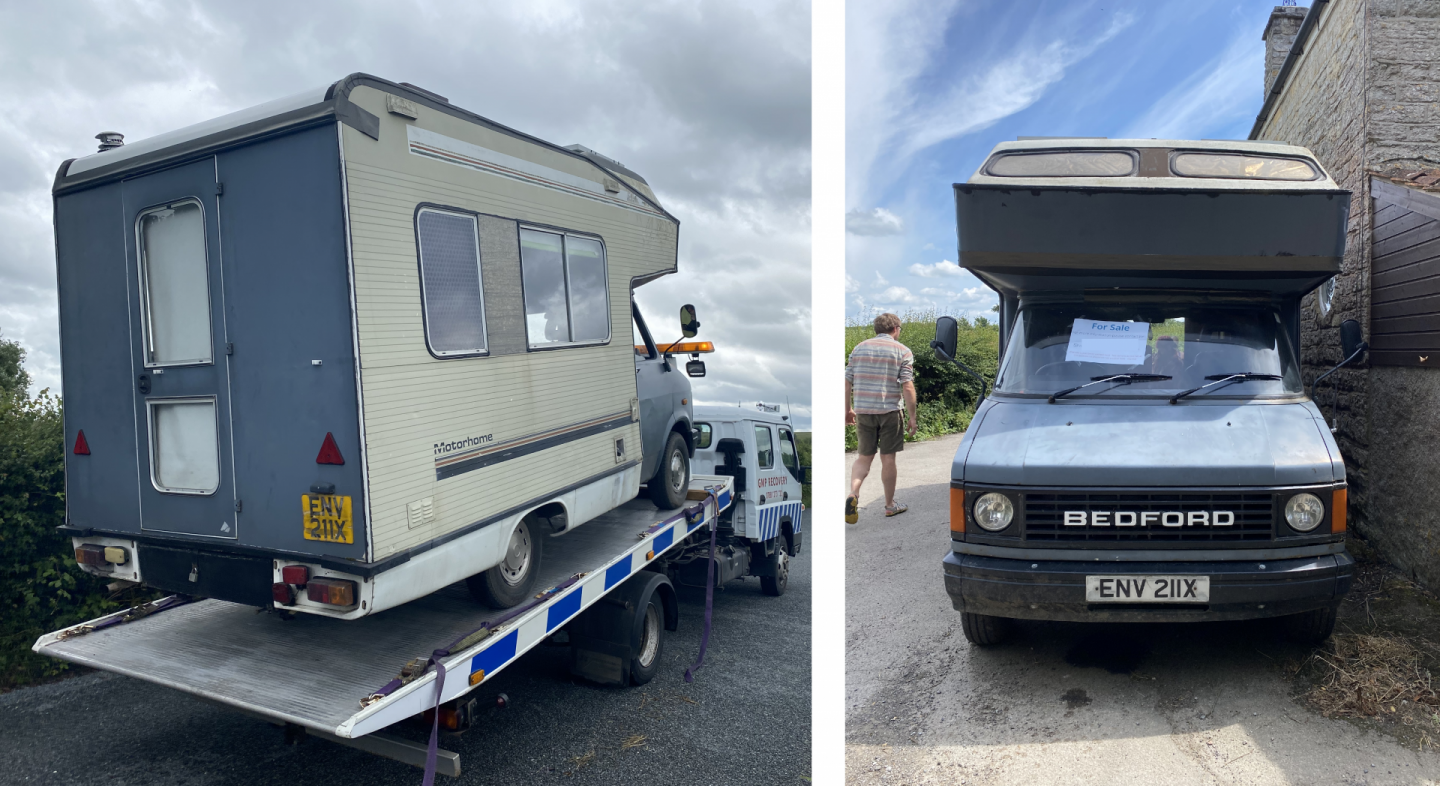
Evie was priced at £2,000 when we stumbled across her, and in the end we offered her owners £1,800. She had some great features like a solar panel system and lots of space inside, but the downside was that she didn’t actually start and was in need of engine work and an internal refit.
What work did Evie need?
Short answer? Quite a lot! Below is a full rundown of the work we did – we had a lot more free time than usual due to lockdown, and between us had some mechanical (Jake), carpentry (Lydia) and upholstery (me) knowledge to do a big chunk of the work ourselves. Some jobs we got electricians and mechanics in for. We worked on Evie in a car park for a few months before we were kindly allowed to park her up on an industrial estate, which made tinkering with her on the weekends much easier. Evie was roadworthy by the spring of 2021, then passed her (last ever!) MOT and was finally finished in the summer.
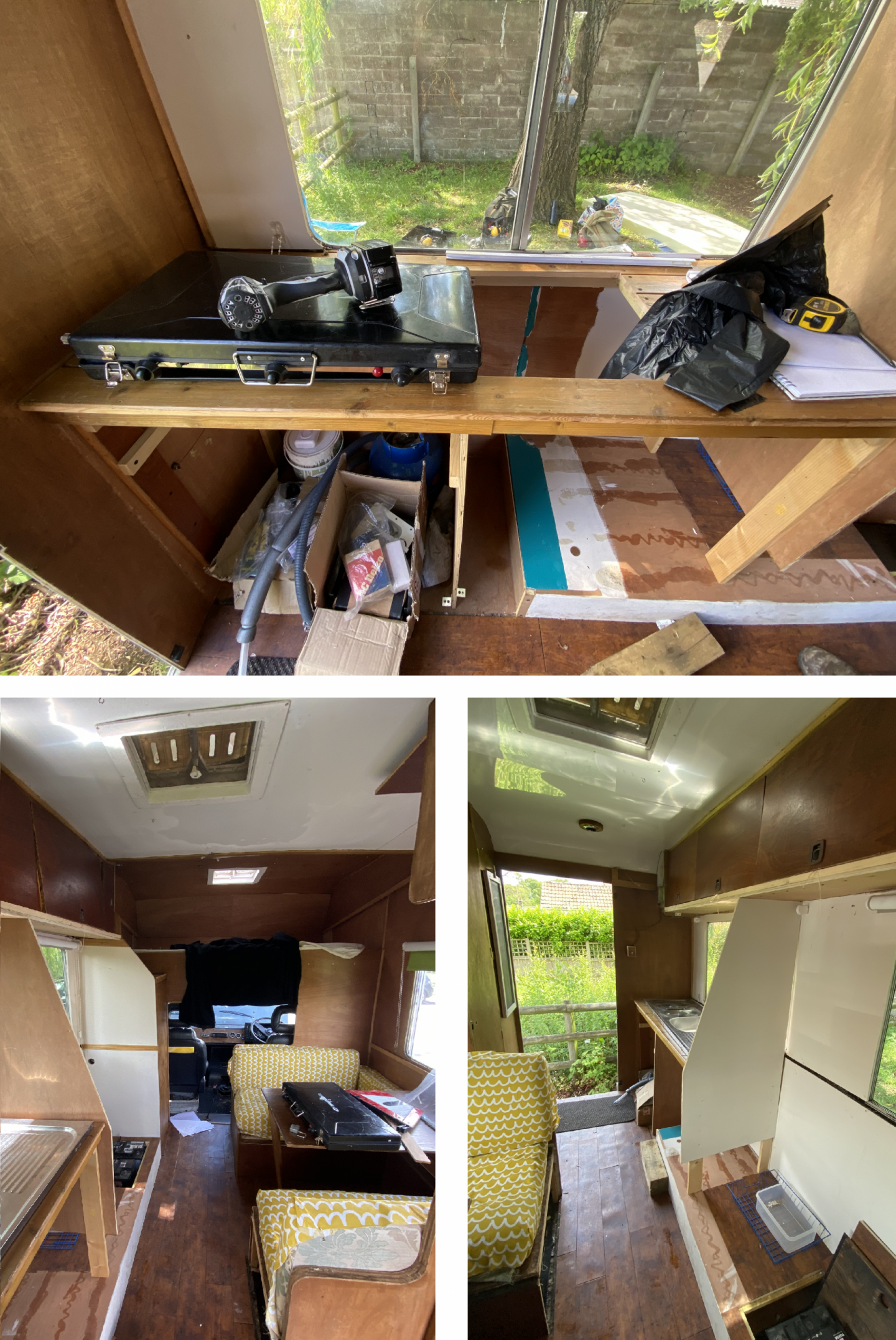
The big fat Evie job list
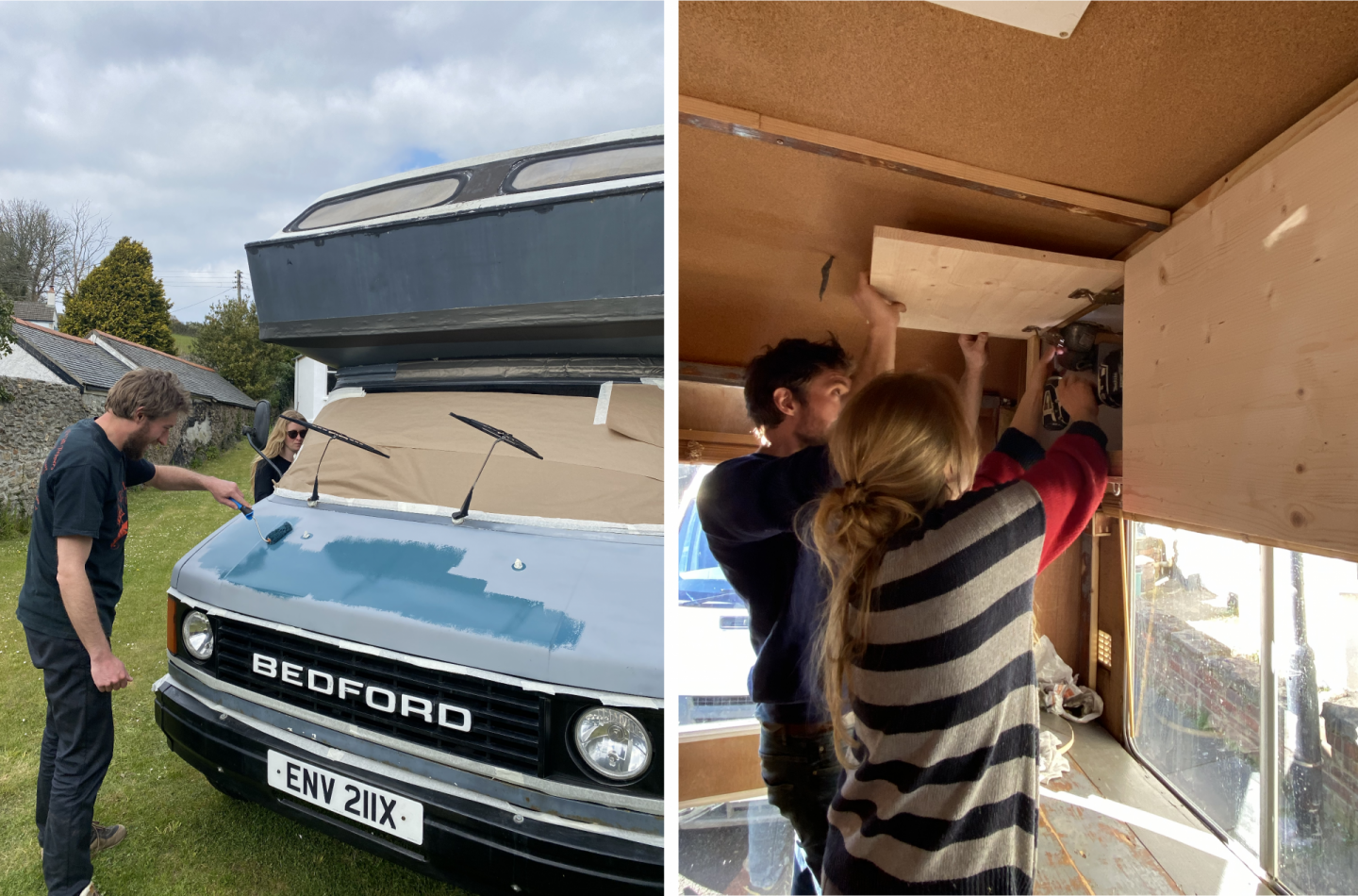
-Take Evie home on a flatbed truck, as she didn’t start!
-Rip out her ceiling and most of her interior, and begin to rebuild cupboards, kitchen counter and table. She looked awful at this point.
-Rip out her damp ceiling (at some point someone had insulated it with kitchen sponges…), reline it with thermal foil insulation and then line it with cork (this was, in my opinion, the worst job as we had to use a LOT of messy glue).
-Get her engine up and running and then get her through her MOT! This included emissions regulation work, a new stainless-steel exhaust system, new fuel lines, a compete engine flush, a new alternator, a new thermostat. We also replaced the temperature sender, bulbs and other perishable items. This was the most expensive part of restoring Evie, partly because we got mechanics to help and to check our work.
–Upholstery: I made curtains, replaced the campervan blinds and reupholstered Evie’s cushions in deadstock corduroy.
-Replace all four tyres.
-Take up, clean and then replace and nail down her wood-effect lino floor (a jigsaw nightmare – why didn’t I take a photo as a reference before I reinstalled it?).
–Repaint her cab with white Hammerite paint (it was painted in pink glitter when we got her. What 80s parties Evie must have seen!).
-Scrape and wash mould off her roof and sides (this was pretty gross but satisfying – it wouldn’t wash off with sponges but eventually came off with fine sand paper).
-Treat her knackered leather seats (I’ve had a few questions about what we used for this one – we used Leather Recolouring Balm from Furniture Clinic in black, and it worked a treat).
-Get an electrician to fix her solar panel system, which now charges her interior lights, and fix an inverter so we can use her two plug sockets.
-Add the fun bits – climbing holds for getting into bed, bookshelves, flags and fabric on the ceiling, a framed portrait of Evie in pride of place. Our mate Ali even embroidered her license plate for us!
–Repaint her! More on that below.
What skills did we need?
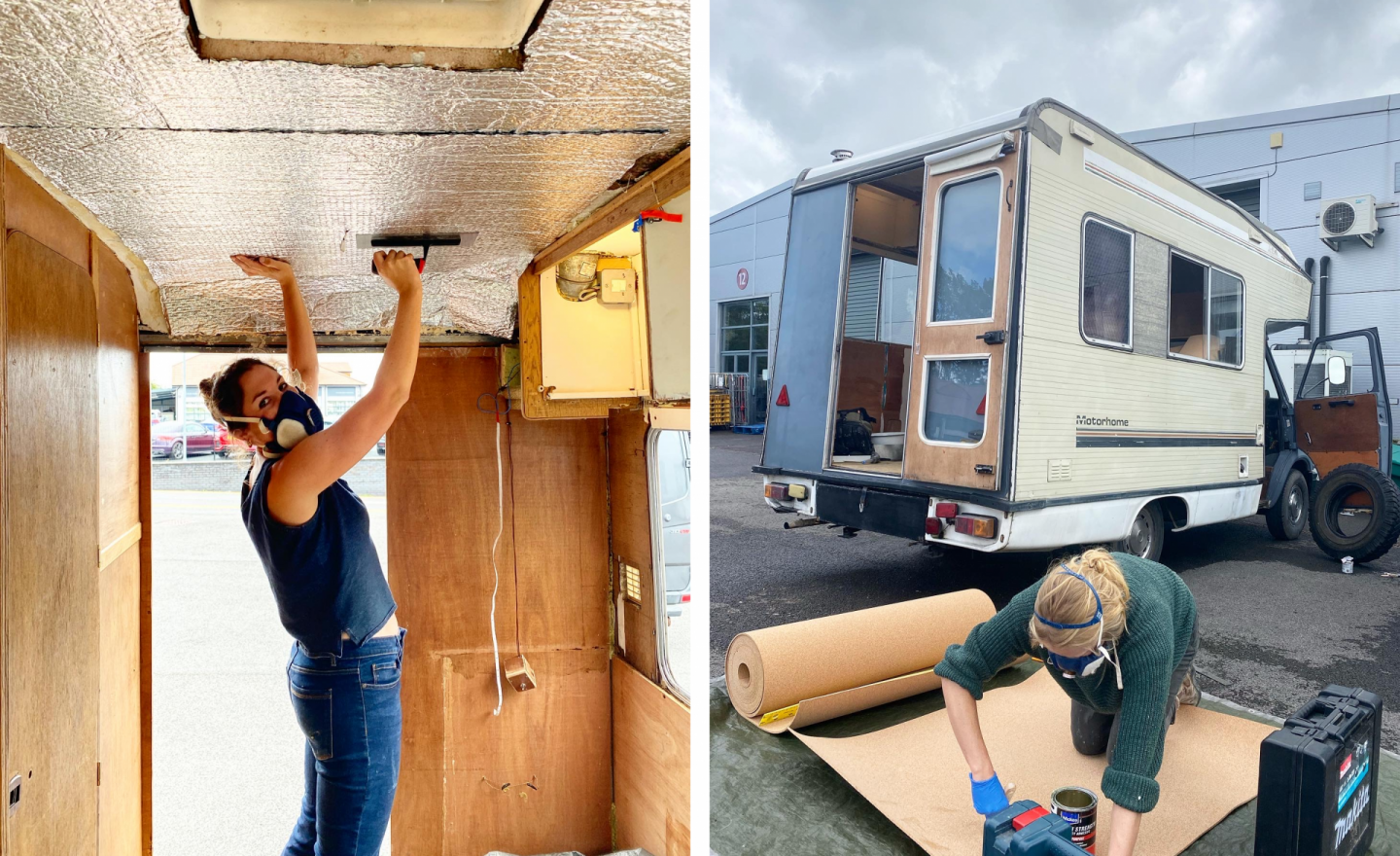
When we deliberated over buying Evie, we decided we had enough mechanical and carpentry knowledge between the three of us to give the project a go (I had none of these skills, mind – I did most of the cleaning, all of the upholstery and also held a lot of stuff). You would definitely need some basic skills to take on your own vintage van unless you had a big budget for getting the work done externally.
That said, the interior work we did wasn’t very professional and it was often on a shoestring – we’ve bungled up and redone a few jobs but it never really mattered, and we quite like Evie’s slightly wonky details – she wasn’t very polished to begin with, after all! She doesn’t look posh inside, but she’s very cosy and homely. As she wasn’t expensive to begin with, she made the perfect project.
Repainting Evie
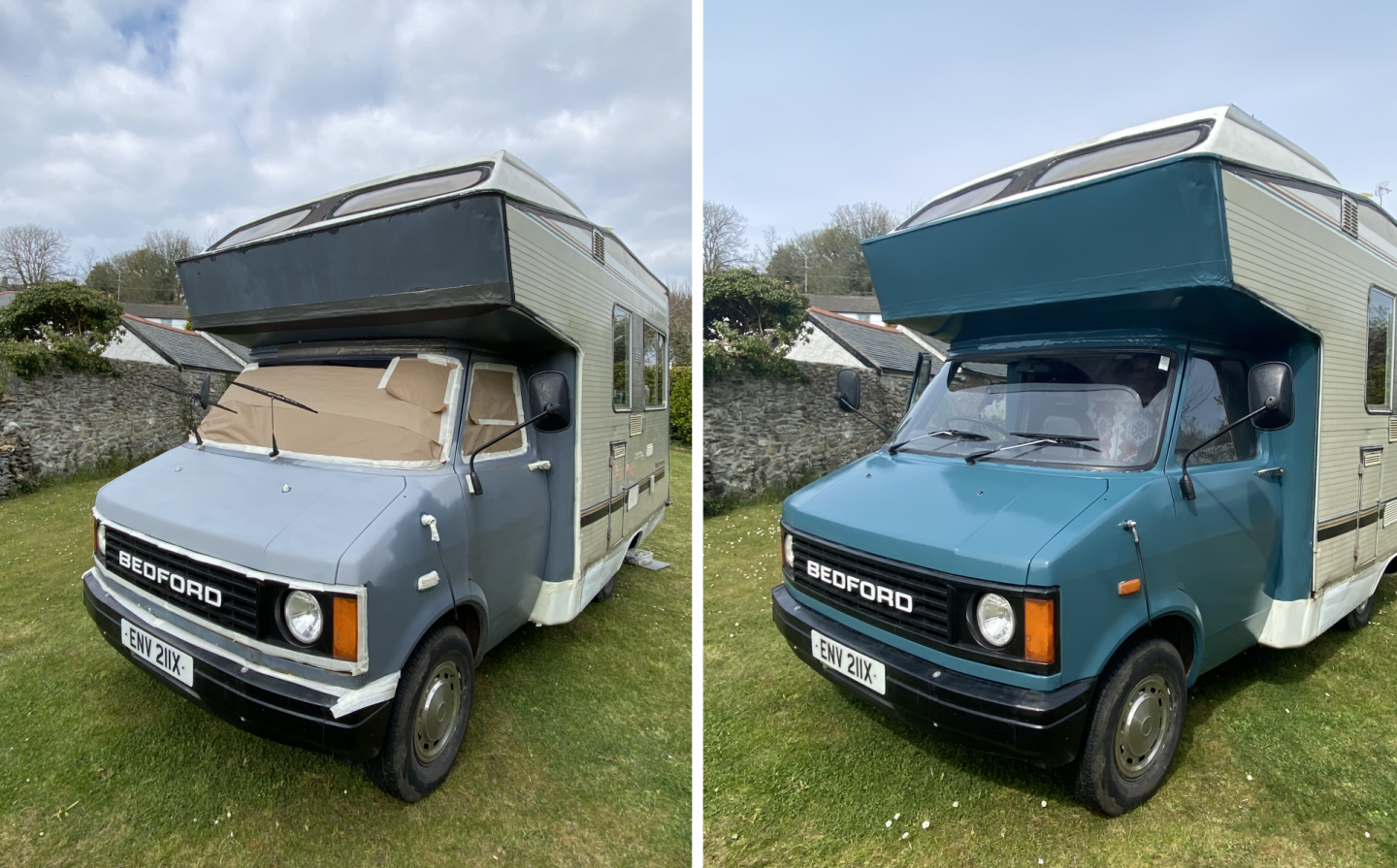
When we bought Evie she didn’t have a top coat of paint – just a chalk blue primer that looked rather nice but that wouldn’t protect her long-term. The primer was allowing her to rust in a few spots, so we needed to give her an outer coat as soon as possible (and as soon as the weather allowed). We re-primered her cab and back surfaces using a primer spray. Then we used Land Rover paint in Marine Blue (this was close as we could find her original 1982 Bedford colour, Bedford blue) and hand painted all the surfaces. We painted Evie by hand with roller brushes and a small paintbrush for the details. It worked surprisingly well! As Lydia put it, the paint ‘levelled out’ brilliantly.
What’s Evie like now?
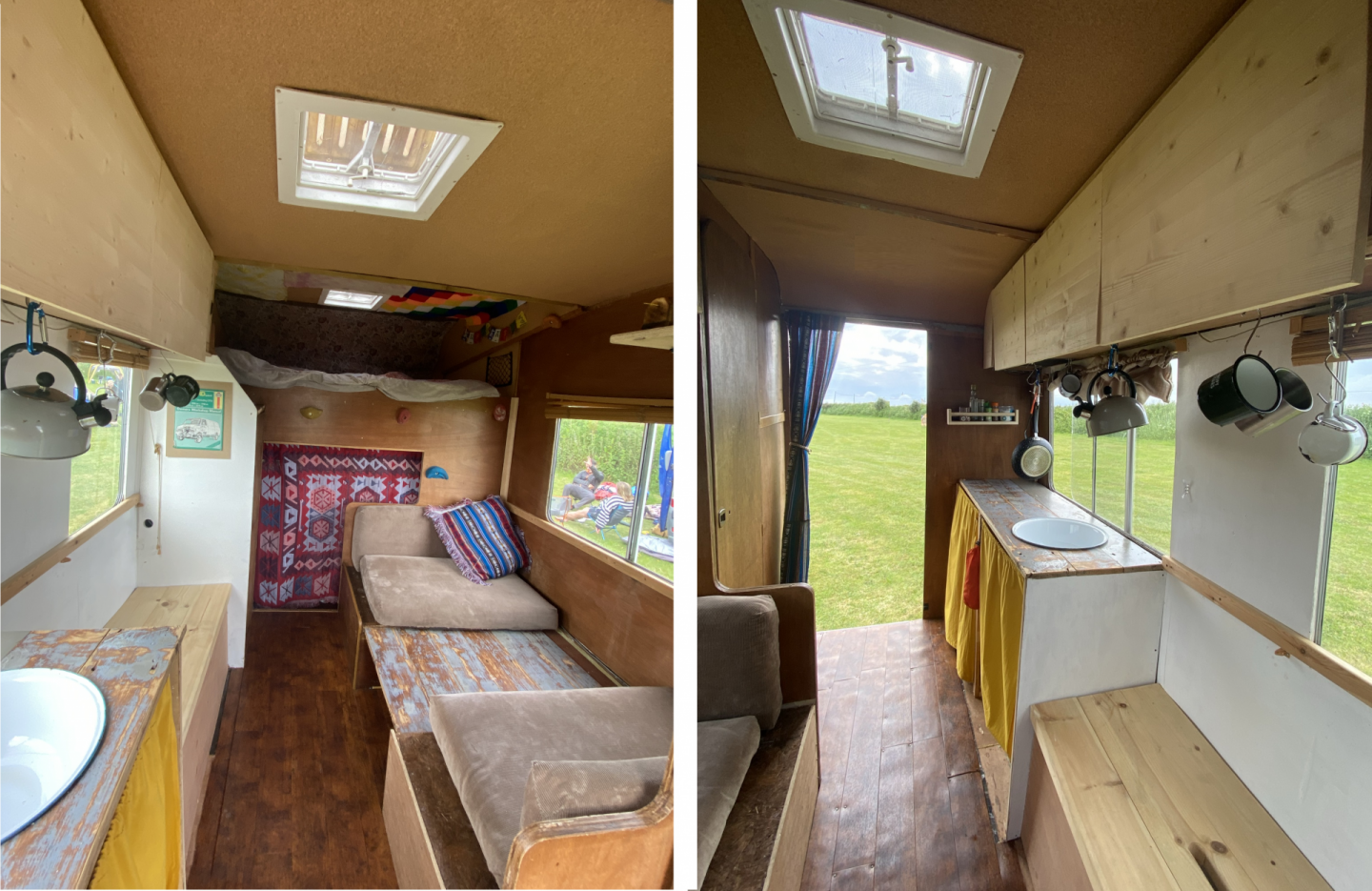
She’s a dream. Inside, there’s now tons of space – Evie happily sleeps four, and the table and blanket box can seat six in total. Evie’s got a stove, lots of storage cupboards, she fits surf boards inside – she’s brilliant! And she can get to a speedy 65 miles per hour max, which means she can go (slowly) on the motorway. Since she passed her MOT she’s been on little road trip adventures to Devon, Cornwall and South Wales, been surfing and even been to a festival.
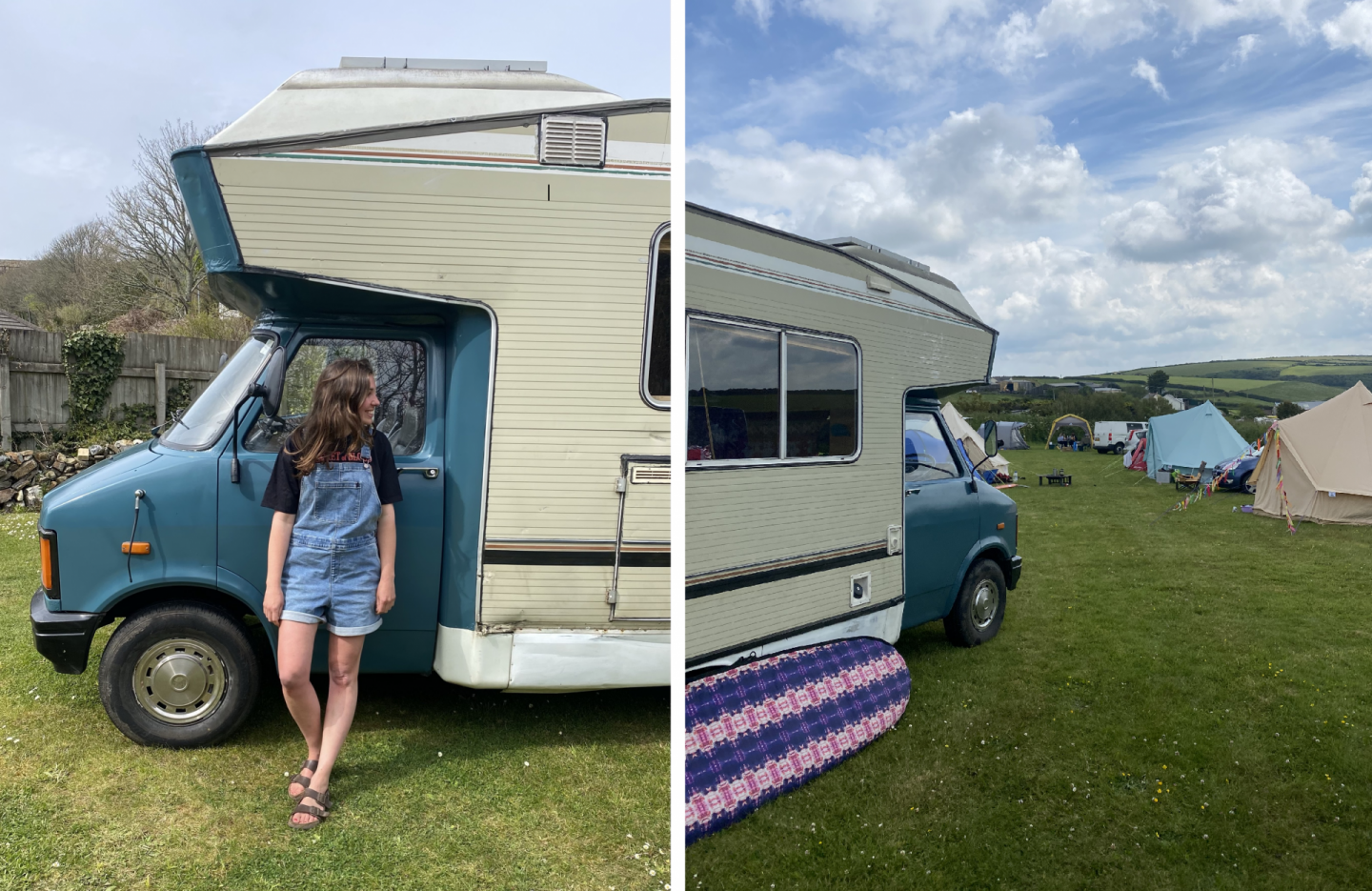
Evie runs really well – the only issues we’ve had is that if it’s a hot day and you drive her for a while, she has to cool down before you can start her again. She also needs her distributor cap cleaning if you drive her in heavy rain. These are both pretty common issues for vintage vehicles. She’s also not cheap to fuel, but we don’t plan on taking her on massive road trips, just on weekend pootles around the UK.
What’s left to do?
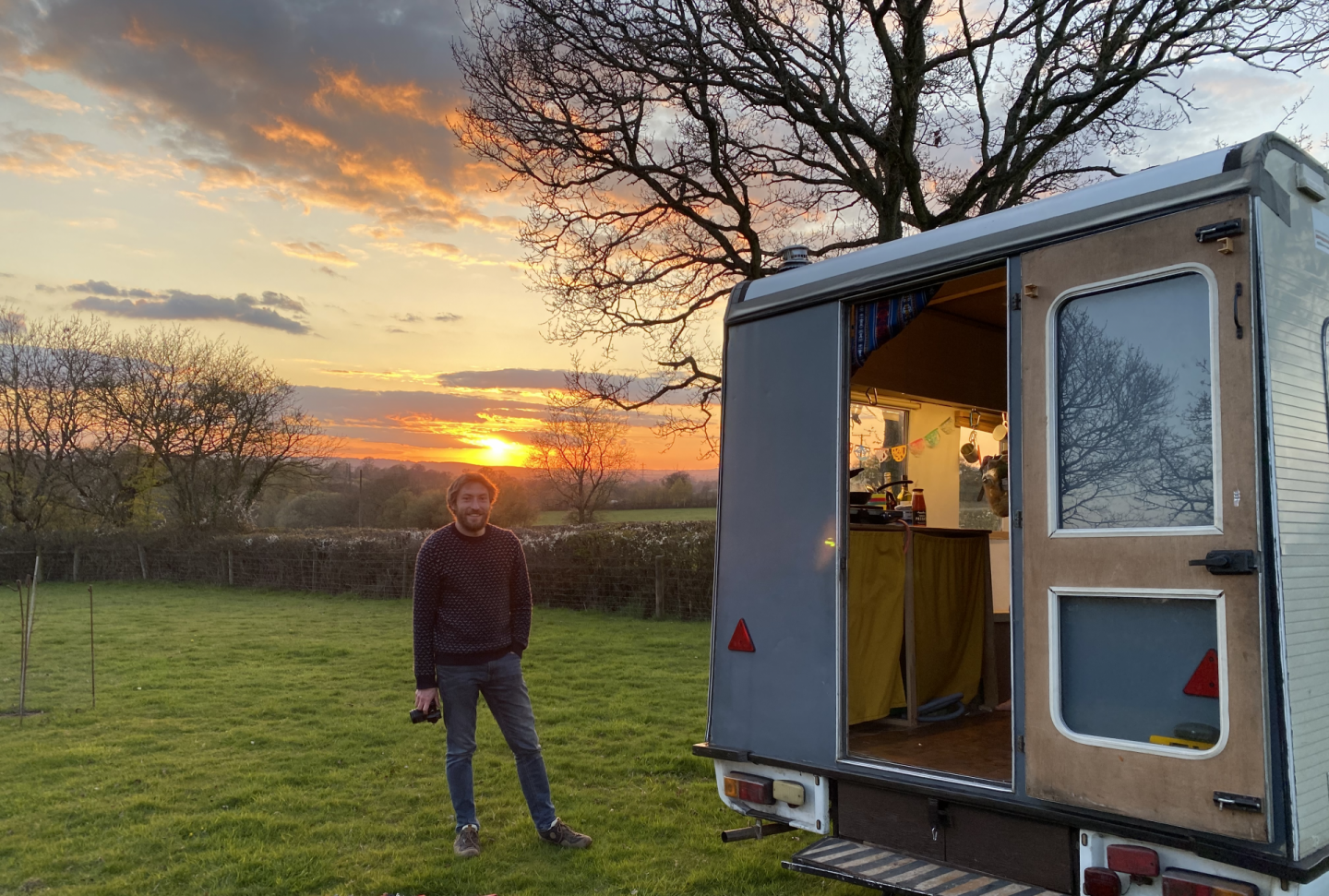
Our goal was to get Evie up and running in time for summer 2021, so we could take her camping and surfing with mates. We’ve got a few more tweaks to make to Evie this winter – we have a vintage sink for her but no running water at the moment, and she needs some shelves in her two storage cupboards. She doesn’t have heating for the winter, so installing a stove might be an option. She’ll always need work – that’s just the way of vintage vehicles!
Evie took time and effort, and we probably put hundreds of hours of manpower into her. But I’d 100% recommend a project just like her to anyone. It was tremendous fun, I learned tons about DIY and it’s so wonderful to have done her up exactly how we wanted. Trundling down country lanes, taking her surfing and parking up for the night in campsites under mountains – she’s worth all the elbow grease we put in, and more.
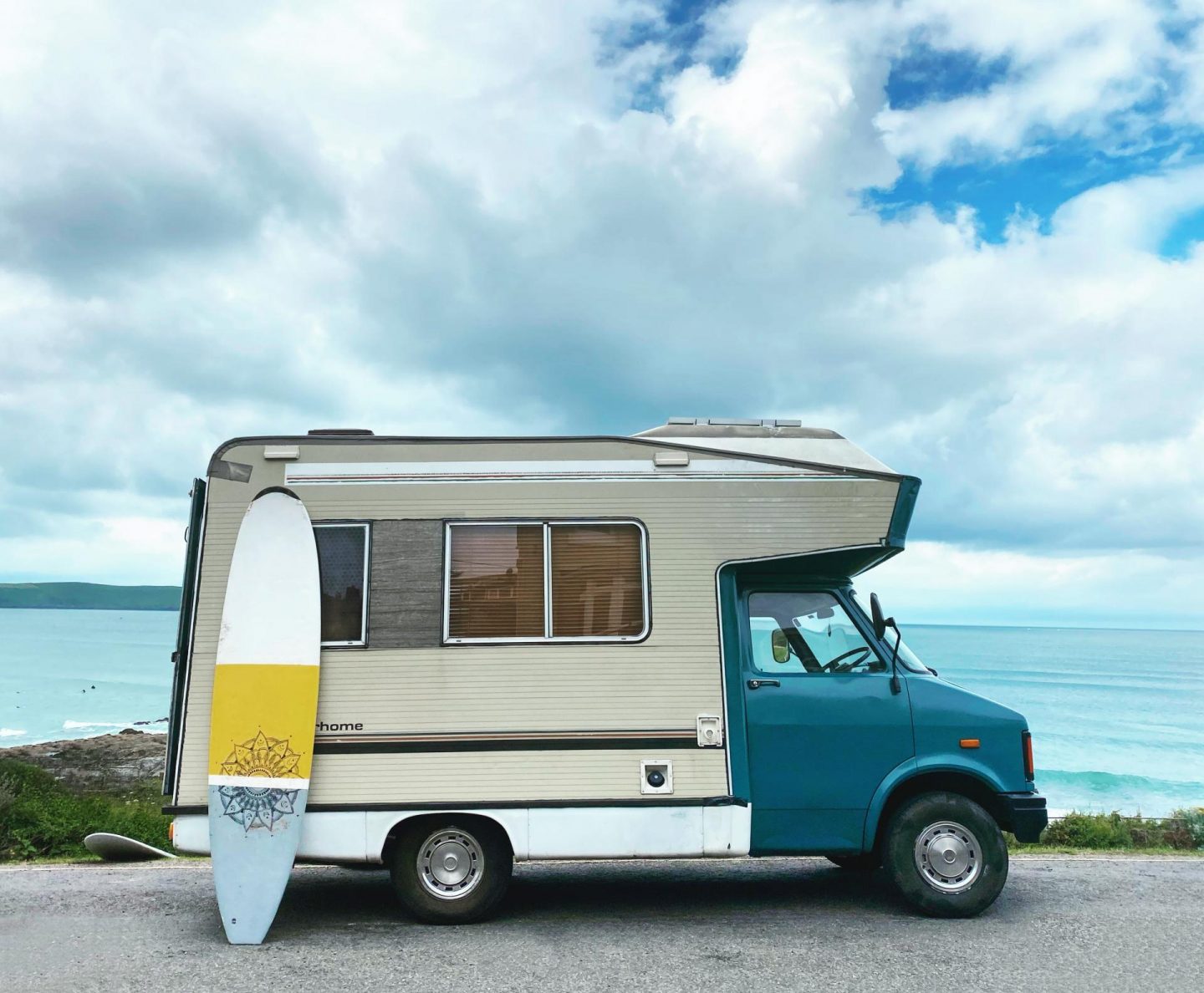
Got your van sorted? Take it to one of my top ten adventure campsites in the UK
This is blooming brilliant! Well done to the 3 of ye!
Amazing result! and very brave of you to take on the restoration